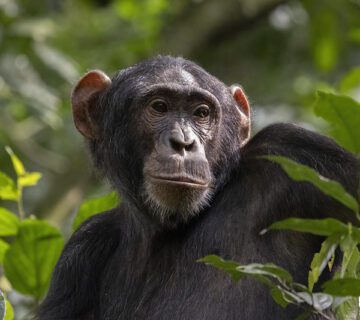What Makes Uganda a Standout Safari Destination? Are you considering a safari vacation to Uganda and wondering what makes Uganda so well-known as an African safari destination? Uganda is a one-of-a-kind safari destination because it includes all of the savannah wild animals, primates in its virgin rainforests (including more than half of the world’s mountain gorillas), bird diversity, mountains, and beautiful scenery all in a tiny package.
Uganda is one of the world’s smallest yet most beautiful countries. Uganda, nicknamed the “Pearl of Africa” by former British Prime Minister Winston Churchill, is a fascinating safari place to consider when arranging an African safari holiday. The location is home to a vast assortment of animals and other creatures that can only be found in East and Southern Africa. Furthermore, in comparison to West Africa, the accessibility of its considerable forests makes it an unrivaled destination for witnessing African forest wildlife in their native habitats, ranging from mountain gorillas and chimps to a colorful variety of butterflies and birds.
Uganda’s relatively large amount of closed-canopy forest distinguishes it from other African safari locations. The thick vegetation includes Afro-montane forests like those found on Mount Elgon, which have many characteristics with ecosystems found on Mount Kilimanjaro, Mount Kenya, and Semliki National Park—an easterly extension of the Congolese Basin and West Africa’s lowland rainforest.
The Main Reasons Why Uganda Is A Famous Safari Destination.
We want to show you Uganda because it is so different from other nations, not because we want to market it to you. Uganda, a country rich with natural beauty, requires at least 15-20 days to experience everything it has to offer as an African vacation destination. You may join the crowds eager to discover the delights of this little, magnificent safari nation in the heart of Africa. So, what makes Uganda a distinct and well-known safari destination? Here are five features that distinguish Uganda as a unique African safari destination.
Safaris Featuring Unusual Wildlife.
The Best Gorilla Trekking and Primate Viewing Adventures.
Beautiful Landscapes.
Rich birding habitats that are easily accessible.
Private Safari in an Unusual Location.
Safaris Featuring Unusual Wildlife.
When it comes to more conventional game watching, Uganda is not comparable to Tanzania, Kenya, or even the bulk of southern African states. Further south, the Luangwa, Chobe, Hwange, and Kruger national parks, as well as Tanzania’s Selous and Serengeti, as well as their bigger reserves, are all too small to have any reserves of the same magnitude.
Nonetheless, the widespread poaching that happened during Uganda’s civil war and political upheaval in the 1970s and 1980s allowed the country’s savanna reserves to gradually recover. Queen Elizabeth, Kidepo Valley, and Murchison Falls national parks today offer as good a chance of encountering enduring Africa safari favorites like lion, elephant, buffalo, giraffe, and even leopard as many more renowned game reserves, with the further advantage of relying on a circuit that also offers some of the best forest primate viewing in Africa.
These parks are also among the most conveniently accessible, fairly priced, and valuable savanna reserves in Africa for budget-conscious leisure travelers. Due to its tiny size and remoteness from vast numbers of tourists, Uganda is a unique location and an attraction for intelligent travelers.
The Best Gorilla Trekking and Primate Viewing Adventures.
Visitors to Uganda come for seven out of ten reasons, including the opportunity to view primates. Uganda stands out as a unique tourist destination due to the simplicity with which a primate trip can be added to any Uganda safari itinerary. Uganda also has the most comprehensive primate-watching chances of any African country.
Uganda has the greatest concentration of primates on the continent, with thirteen diurnal and six nocturnal species. The mountain gorilla and chimp are on the list because they generate the majority of Uganda’s wildlife tourism earnings.
Other primates of interest include golden monkeys, de Brazza’s monkeys, black and white colobus monkeys, red colobus monkeys, pottos, bushbabies, grey-checked mangabeys, L’Hoest’s monkeys, red-tailed monkeys, vervet monkeys, patas monkeys, baboons, and blue monkeys.
Beautiful Landscapes.
Uganda’s geography is known for its reasonably wet climate, with the exception of the semi-desert and arid acacia woods of the extreme north. The region receives more rainfall than other parts of East Africa, making the terrain greener and more fruitful. At the same time, wetland ecosystems such as lakes, rivers, and other wetlands encompass over 25% of the country’s land area.
The major freshwater bodies in Uganda or near its borders include Lakes Victoria, Albert, Kyoga, Edward, Kwania, and George. Among the lesser stretches are Lake Wamala, near Mityana; Lakes Bunyonyi and Mutanda in Kigezi; Lakes Bisina and Opeta in the east; and almost 100 tiny crater lakes sprinkled throughout the Rwenzori foothills.
The majority of Uganda is very unremarkable in terms of topography; it is largely an undulating plateau situated at heights of 1,000-1,200 meters between the eastern and western arms of the Rift Valley, but it is bordered by some of the continent’s most magnificent mountains. The tallest of these are the Rwenzori Mountains, which extend along the Congolese border and are crowned by Mount Stanley’s Margherita Peak, which reaches a height of 5,109 meters. It is Africa’s third-highest peak.
Elgon (4,321 meters), the Virungas (including Muhabura at 4,127 meters, Uganda’s highest peak), Moroto (3,084 meters), Kadam (3,068 meters), and Morungole (2,750 meters) are all located near the Kenyan border north of Elgon.
These mountains, which arise independently above the surrounding plains, are home to several solitary high grasslands and woodland microhabitats. Afro-alpine moorland, an intriguing and surreal home known for gigantism in plants like lobelias, heather, and groundsel, as well as habitat-specific creatures like the brilliant scarlet-tufted malachite sunbird, spans the Rwenzori, Elgon, and, to a lesser extent, the Virungas.
Rich birding habitats that are easily accessible.
Uganda is a one-of-a-kind location for enthusiastic birdwatchers and wildlife enthusiasts since it immerses any birding enthusiast in a plethora of bird species. More than 1060 bird species have been reported in Uganda, which also allows easy access to a number of difficult-to-reach bird-rich environments in adjacent nations.
Birdwatchers are particularly interested in the half-dozen kinds of birds found only in papyrus swamps, particularly the gorgeous papyrus gonolek and the greatly sought-after shoebill, both of which may be found more regularly in Uganda than anyplace else.
The western Ugandan rainforests must be regarded as the most important bird habitat in the country, and they should be of great interest to birdwatchers, particularly if they are already relatively familiar with typical East African species. In terms of regional species, Semliki is perhaps the most appealing forest, with Budongo, Kibale, and Bwindi Impenetrable Forest close contenders.
However, the guides who take visitors into the forest and adjoining Magombe Swamp—located in Bigodi wetland just outside Kibale National Park—are most likely Uganda’s greatest single destination for forest birds.
However, practically any woodland in Uganda is worth visiting for birding; even the comparatively tranquil Entebbe Botanical Park will provide a number of fascinating species. You could certainly identify more bird species in ten minutes in the Entebbe suburbs than you would in an afternoon strolling through the Semliki Forest.
Private Safari in an Unusual Location.
Uganda is a remarkable spot for a knowledgeable traveler since it still has comparatively few controllable tourists compared to its well-known large safari neighbors. You’re likely to be the sole tourist in a safari camp or on a wildlife drive in the entire national park.
Uganda seems to be a large private reserve due to the low number of people on safari, making a private safari a luxury accessible to the common traveler. The bulk of Uganda safaris departing from Entebbe are privately organized by tour companies, allowing travelers a choice of alternatives for tailoring their trip itineraries to their specific travel interests. Uganda is the only African country that provides this unique type of safari planning.





